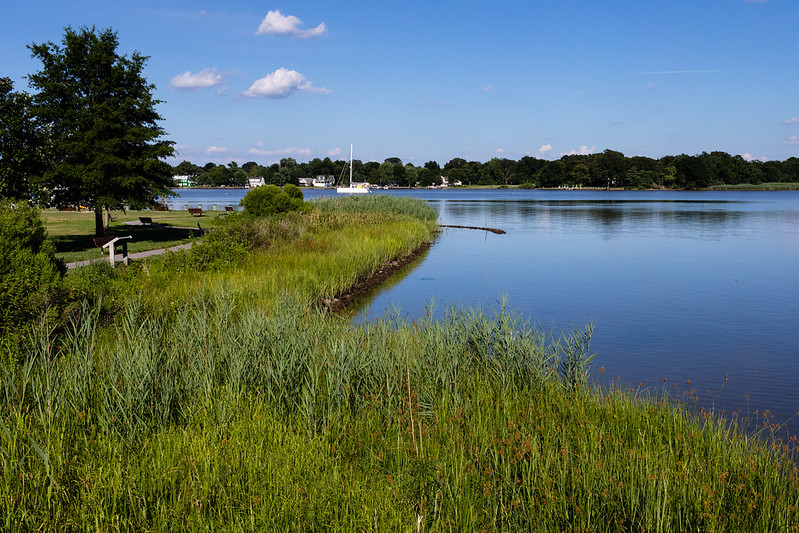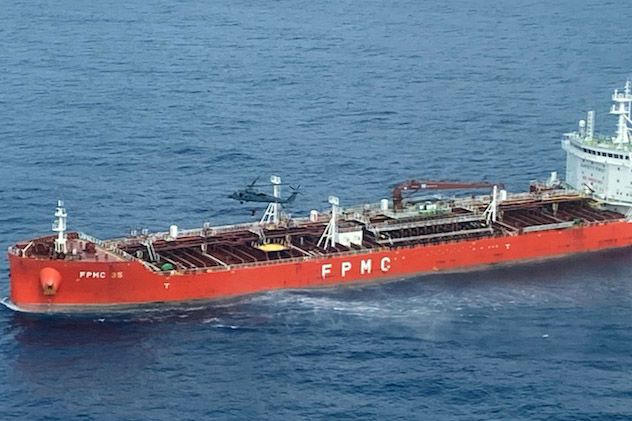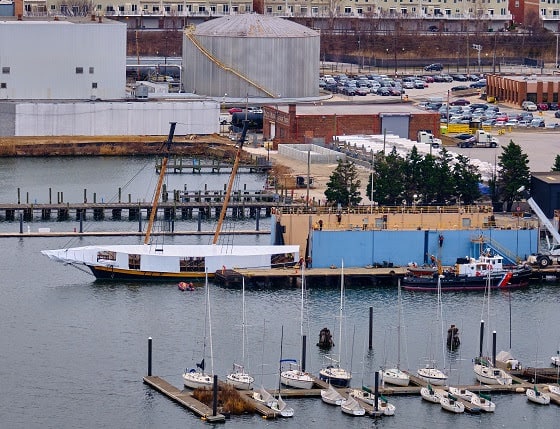As the Maryland General Assembly begins its next legislative session, environmental and conservation organizations are throwing their support behind a Senate bill that will reform the state’s current living shoreline laws.
Senate Bill 417 (HB602) sponsored by Sens. Elfreth, Gile and Jackson, aims to curb the continued widespread use of armored shorelines and clarify existing law by promoting the use of living shorelines and provide financial assistance to homeowners who convert hardened shorelines to a natural one in certain priority zones. The bill would require the Department of the Environment, with the Department of Natural Resources, to designate priority shoreline restoration zones and establish a fund for grants to offset the associated costs to residents.
The bill is on the list of legislative priorities for the Eastern Shore-based organization ShoreRivers. Strengthening the shoreline laws is an urgent matter in a region prone to flooding and erosion, says Chester Riverkeeper Annie Richards.
“Armored shorelines do prevent erosion, but they’re just a Band-Aid,” Richards said. “As we see increased storm activity, rising tides, and higher water levels, we often see water coming over the bulkheading and eventually blowing out the bulkhead itself.”
Living shorelines are regarded as a more environmentally sound alternative to structural or armored shorelines such as bulkheads. Designed to emulate a natural, dynamic system, living shorelines consist of rocks, vegetation, and sediment that dampen the destructive energy of waves.
One goal of the bill is to decrease the number of waivers issued by the MDE which exempt property owners from implementing the living shoreline standards. Homeowners who cite the burden of cost for a living shoreline have been allowed to apply for a waiver. They can also get a waiver if the agency notes environmental conditions such as “excessive [existing] erosion, severe high energy conditions, or extreme water depths” would prevent the effective implementation of a living shoreline.
Richards explains the cost of a living shoreline generally includes design development and the subsequent approval process, which involves multiple local, state and federal entities and can take up to a year to complete. Acquiring materials and implementing the approved design can greatly fluctuate in cost based on supply and labor availability.
Thus, the bill also seeks to reinstitute the Coastal Resilience and Shorelines Restoration grant program, which would provide some funding for individual projects.
Armored shorelines can potentially disrupt habitat for aquatic life. Richards explains that vegetation cannot grow alongside a bulkhead, thus eliminating nursery grounds for fish. A living shoreline has “a stable slope so it can support vegetation growth, sustaining a stable environment for breeding.”
Beyond the environmental impact, living shorelines provide a benefit to property owners as well.
“Especially here on the Eastern Shore, we’re going to be hit hardest by sea level rise. Most of our communities are in low-lying areas close to marshes, so they’re going to see aggressive erosion,” Richards said. “The number one reason ShoreRivers is called to do property consults is because of dramatically eroding shorelines.”
Areas with living shorelines experience less erosion – thus, less property loss – than areas with structured shorelines or no protective shoreline, according to NOAA. The natural elements of a living shoreline system can physically shift and adjust to changing water levels and increased wave intensity, whereas unyielding bulkheads simply get destroyed over time.
The Maryland bill is akin to a 2022 Virginia law that dictates the state “permits only living shoreline approaches to shoreline management unless the best available science shows that such approaches are not suitable.” If an environmental assessment deems the area unsuitable for a purely living shoreline, it is required that the property owner incorporate elements of a living shoreline “to the maximum extent possible.”
The Chesapeake Bay Foundation is also supporting the bill. “Constructing more living shorelines and expanding wetlands are our best ways to prepare Maryland’s coastline as sea levels rise due to climate change,” said Doug Myers, CBF’s Maryland Senior Scientist. “Scientists predict sea levels in cherished coastal areas such as Annapolis will rise 1.5 feet by 2050 and 3 feet by 2100, which would overwhelm our current infrastructure. If we continue armoring our shorelines in the face of this reality, we’ll displace floodwaters to communities that can’t afford to build ever-higher sea walls. Prioritizing living shorelines now will ensure more impactful solutions are in place as threats to Maryland’s coastal communities continue to grow.”
In Virginia, the Clean Water Revolving Loan Fund grants low-interest loans to local governments to aid in the establishment of living shorelines, making it easier for community groups, small businesses, and individuals to choose a more sustainable route to shoreline protection.
“There are a lot of properties with armored shorelines but there are also still a lot of homeowners that have nothing at all,” said Richards. “We need more to help those people achieve a living shoreline.”
The bill is scheduled for a hearing before the Senate Education, Energy, and the Environment Committee Feb. 15.
—Alaina Perdon



